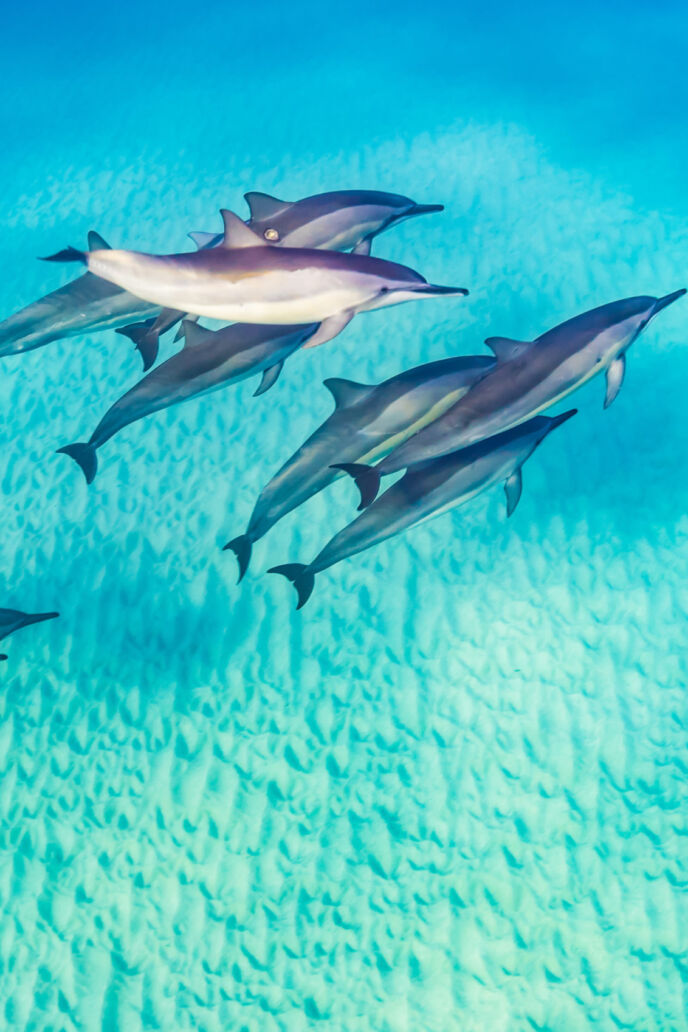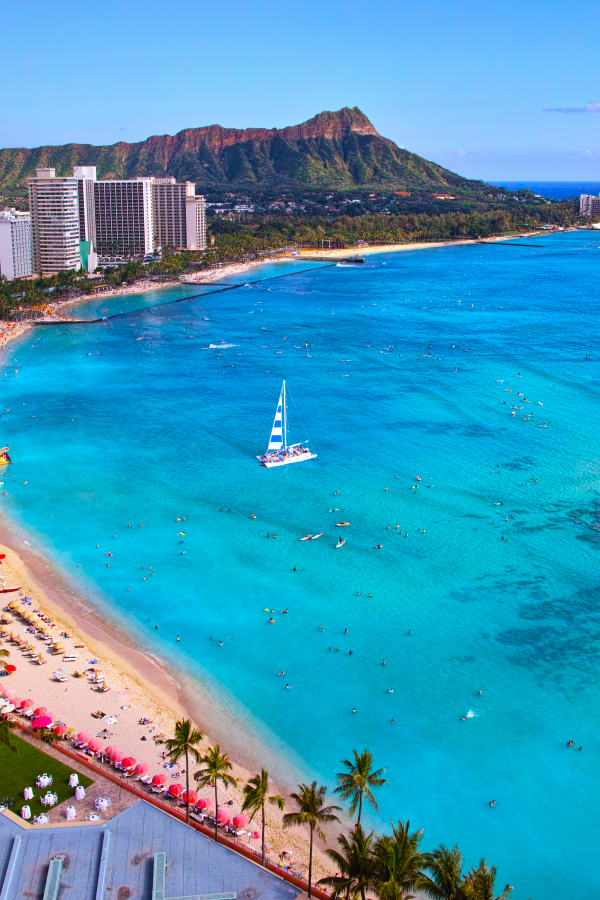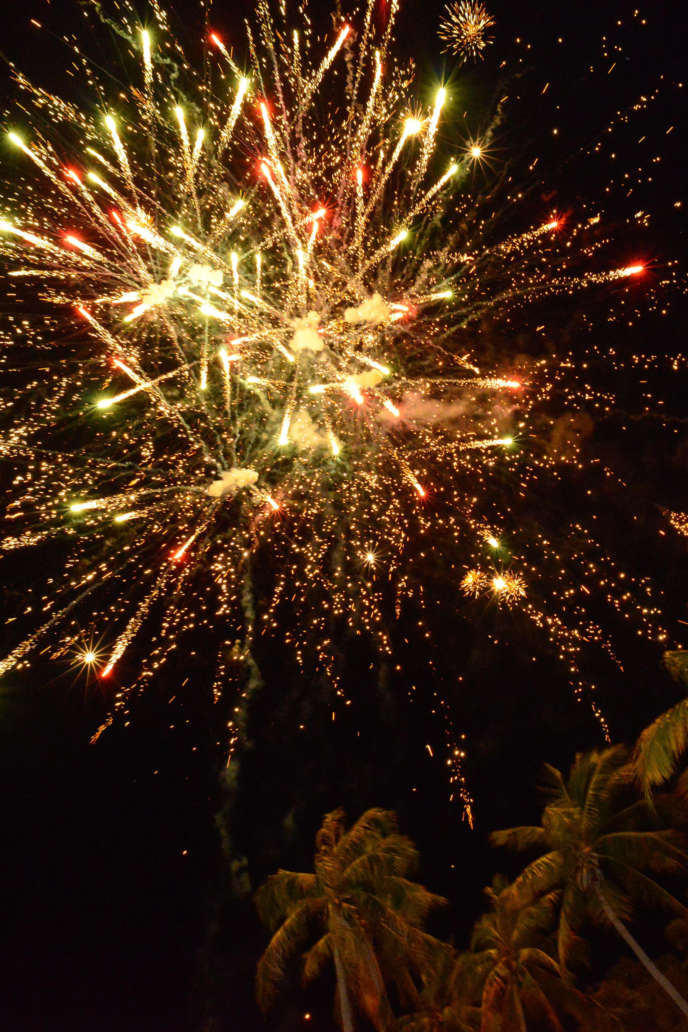The arrival of the New Year is a time of joy and reflection worldwide, and each culture adds its unique flavor to the festivities. In the tropical paradise of Hawaii, New Year’s celebrations blend rich traditions with a vibrant modern spirit. Let’s delve into the tapestry of New Year traditions in Hawaii, where the aloha spirit infuses every moment.
Hau’oli Makahiki Hou: A Glance at the Ancient Hawaiian New Year
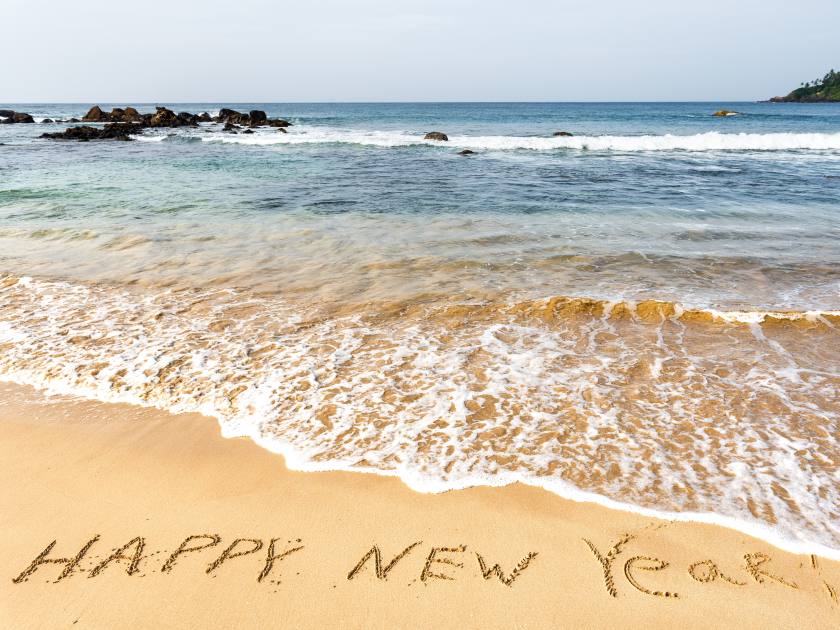
In the Aloha State, New Year’s festivities are as vibrant as the islands themselves. Historically, Hawaiians marked the New Year – or Makahiki – as a period of peace and prosperity, lasting several months. During this time, warfare was kapu (forbidden), and the people engaged in games, sports, and hula dancing, celebrating the bounty of the land and sea.
Music, dance, and storytelling are integral to Hawaiian New Year celebrations. The rhythmic strumming of ukulele and slack key guitars provides the soundtrack to these festivities. Hula dancing, a beautiful, flowing dance form, expresses tales of gods, legends, and everyday life. Moreover, mo‘olelo (storytelling) plays a significant role, as elders pass down ancient Hawaiian myths and legends, keeping the culture alive and thriving into the new year.
Modern New Year’s Eve Celebrations in Hawaii
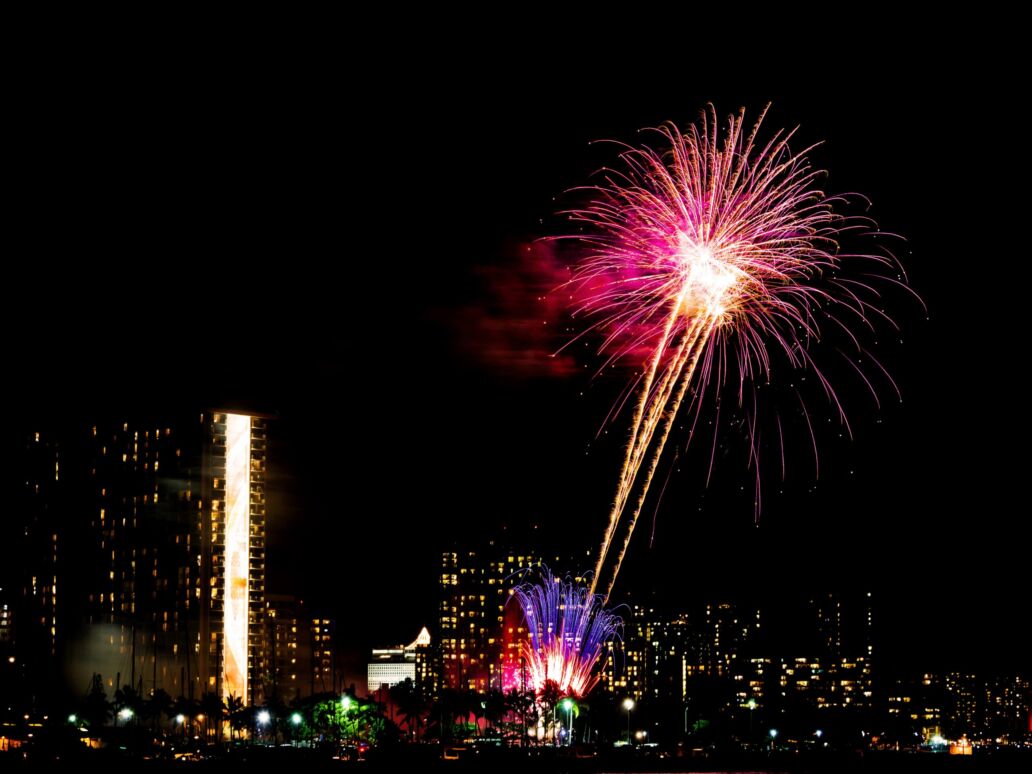
As times have changed, so have the ways Hawaiians ring in the New Year. Today’s celebrations are a vibrant blend of the old and new, wrapped in a tropical setting that is uniquely Hawaiian. The islands are filled with parties, music, and delicious food. Popular events include public gatherings and fireworks displays at Waikiki Beach and Aloha Tower Marketplace. These events draw people from all over the islands, creating a spirited atmosphere that encapsulates the joy of a Hawaiian New Year. However, what sets Hawaii apart is the fusion of traditional and modern elements.
Locals keep their heritage alive with Makahiki customs. The Makahiki season is characterized by joy and prayer, dedicated to seeking prosperity for the land, a bountiful harvest, and the well-being of families. In contemporary Hawaii, the celebration of the new year has evolved into a multicultural event, seamlessly blending the customs and culinary traditions of immigrant communities with the age-old practices of the Hawaiian Makahiki festival. By blending the past with the present, Hawaii offers an exhilarating New Year’s Eve experience deeply rooted in its rich cultural tapestry.
Hawaii’s New Year Traditions
The Ceremony of the Hawaiian Blessing Bowl
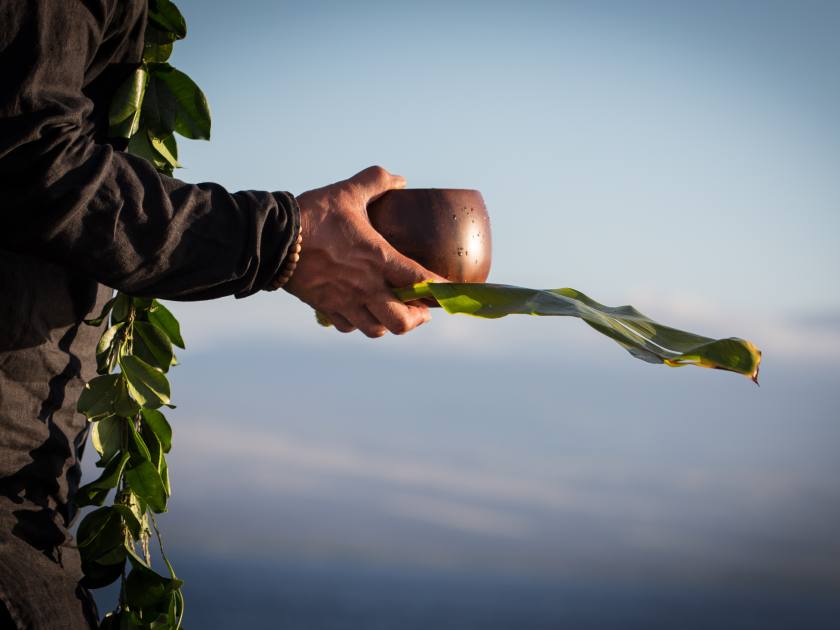
In the spirit of embracing new beginnings, the Hawaiian Blessing Bowl or ‘umeke ho’okupu’ ceremony stands as a cherished tradition, symbolizing the ushering in of the New Year with gratitude and positive intentions. The bowl, filled with various items that represent different blessings, is an essential part of the New Year ritual. Items like seeds symbolize growth and prosperity, water signifies purity and rebirth, while stones stand for strength and resilience. Each item is carefully selected and placed in the bowl with intent and prayer. As each family member contributes to the ‘umeke ho’okupu`, they simultaneously express their hopes and dreams for the coming year. This ceremony is a beautiful blend of respect for the past, acknowledgment of the present, and hope for the future, reflecting the deep-rooted Hawaiian belief in the interconnectedness of all things. So, as the New Year dawns, the Hawaiian blessing bowl serves as a potent reminder of life’s blessings and the promise of new beginnings.
Traditional New Year's Foods in Hawaii
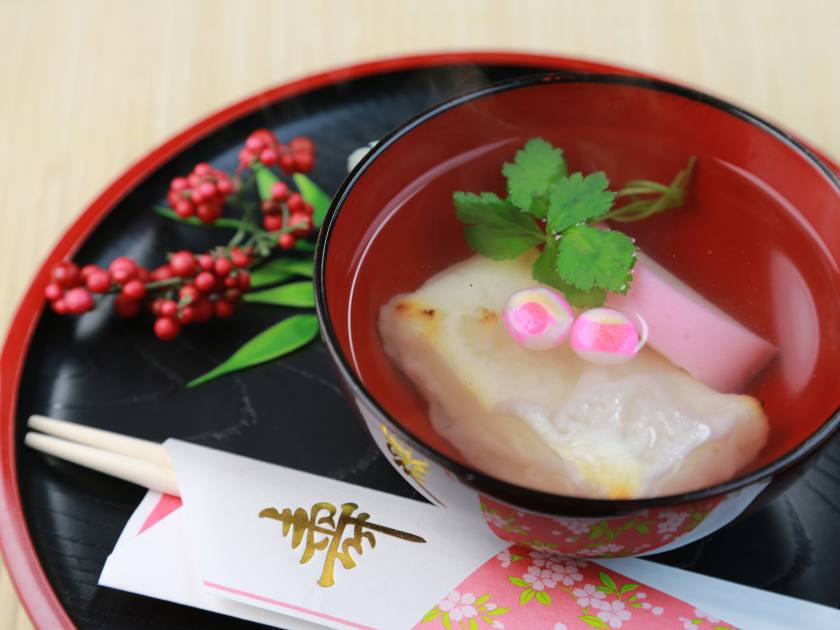
In Hawai‘i, the celebration of the New Year is marked by a unique blend of traditional Asian culinary customs. Rather than engaging in days of elaborate meal preparation, locals often commence the first day of the year with a simple yet meaningful feast. The centerpiece is ozoni soup and mochi, where the mochi is meticulously pounded the old-fashioned way with a substantial wooden hammer known as an usu. This sticky rice delicacy, hand-molded into mounded patties, symbolizes good luck for the coming year. Another cherished dish is nishime stew, prepared in a simpler fashion, alongside succulent giant prawns.
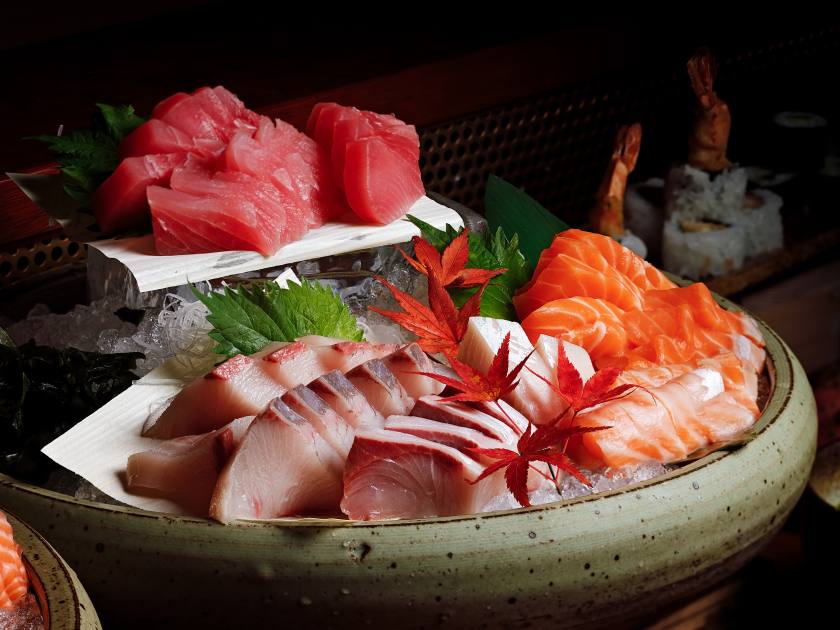
The New Year’s table in Hawai‘i also embraces the popularity of sashimi, a Japanese tradition featuring thinly sliced raw fish, predominantly tuna or ahi. This tradition, once exclusively Japanese, has transcended cultural boundaries, delighting almost everyone with its delicious and symbolic significance. It’s a favored culinary symbol of good luck that locals consider essential for celebrating the New Year.
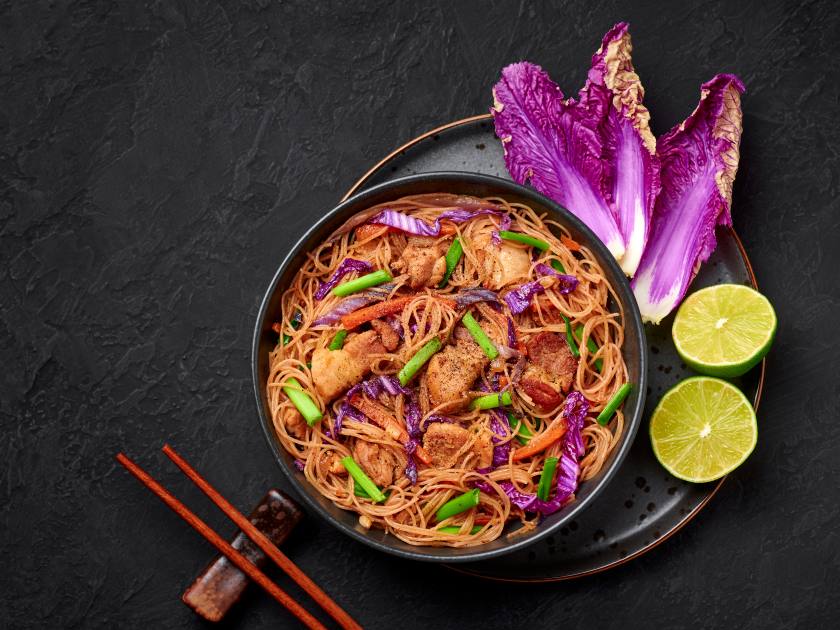
Additionally, the influence of Filipino cuisine is evident in the incorporation of pancit, a dish that intertwines Chinese cooking techniques with Filipino flavors. Introduced by Chinese traders during the Spanish colonial era, pancit has become a staple on Filipino dining tables, attracting wealth, health, and long life. This culinary tradition has seamlessly woven itself into the cultural fabric of Hawai‘i, where the desire for longevity is a universal sentiment.
The Significance of Fireworks in Hawaiian New Year Celebrations
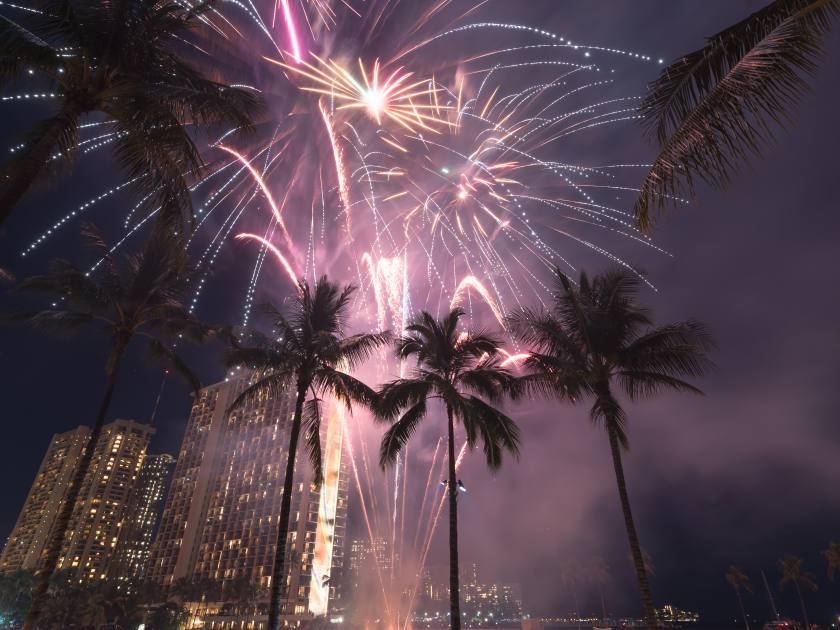
Hawaii’s New Year’s Eve celebrations are marked by a dazzling display of fireworks, rooted in the cultural fabric of the islands. These pyrotechnic displays hold historical significance, echoing the traditions of early Hawaiians who used pyrotechnics to mark significant events. They also hold spiritual meaning, symbolizing the warding off of negativity and the ushering in of positive energies. As Hawaii’s New Year celebrations have evolved, fireworks have become a modern spectacle that blends tradition with innovation. These displays unite communities in joyous celebrations and attract visitors from around the world. In the gentle rustle of the palm trees and the rhythmic sounds of the ocean, fireworks in Hawaii signify not just the passage of time but a celebration of resilience, community, and the enduring spirit of aloha
New Year’s 1st Day Hike
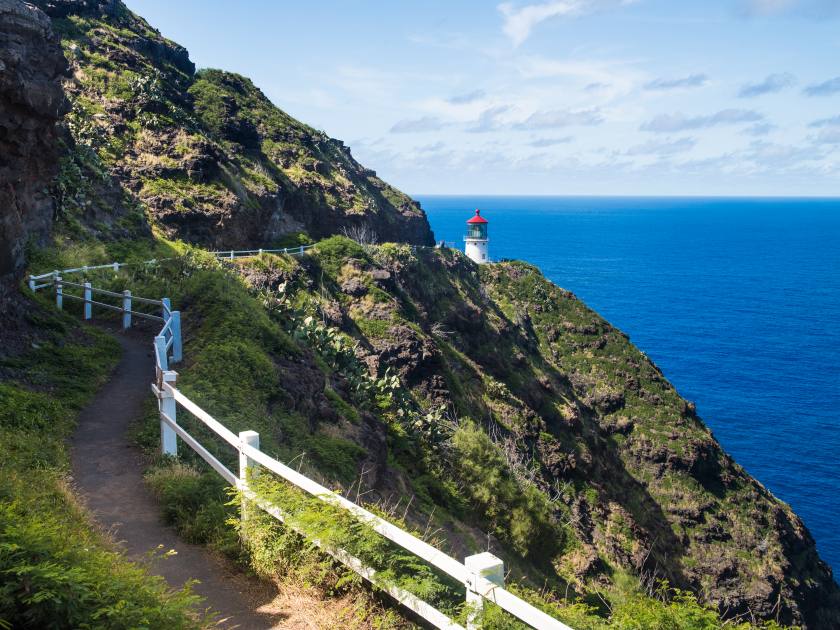
People also take on a refreshing and invigorating start to New Year’s Day in Hawaii by joining the annual First Day Hike at the Kaiwi State Scenic Shoreline. This cherished tradition, organized by America’s State Parks, invites thousands of participants nationwide to kick off the new year on a positive note. In Hawaii, the focal point of this uplifting event is the breathtaking Makapu‘u Point Lighthouse. As the first light of the year graces the horizon, attendees have the unique opportunity to witness the moon’s descent and the sun’s ascent in unison. The shared experience of nature’s grandeur creates a sense of camaraderie among the hundreds who gather for this event annually. It’s a splendid way to embrace the dawn of the new year, fostering a connection with both the natural beauty of the surroundings and the collective spirit of those who embark on this sunrise hike.
New Year's Resolutions in Hawaiian Culture
The concept of resolutions in Hawaiian culture is deeply rooted in their respect for the land ‘aina’, community ‘ohana’, and spirituality ‘mana’. Unlike the more self-centered resolutions often seen in Western cultures, Hawaiians tend to focus more on communal and environmental well-being. The Hawaiian New Year is seen as a time to renew commitments to harmony and balance in all aspects of life, extending to family, community, and nature.
Hawaiian New Year’s resolutions often reflect a deep connection to cultural values. Examples include commitments to ‘malama ka aina’ (caring for the land) through beach cleanups or tree planting. Others aim to strengthen cultural ties by deepening knowledge of the Hawaiian language or traditional practices. On a personal level, resolutions may focus on exhibiting more ‘aloha’ (love, compassion) or practicing ‘hooponopono’ (forgiveness, reconciliation). These resolutions foster interconnectedness and mutual respect, reflecting Hawaiian values. in harmony with each other and with nature, embodying the rich tapestry of Hawaiian values.
New Year's Events and Festivals
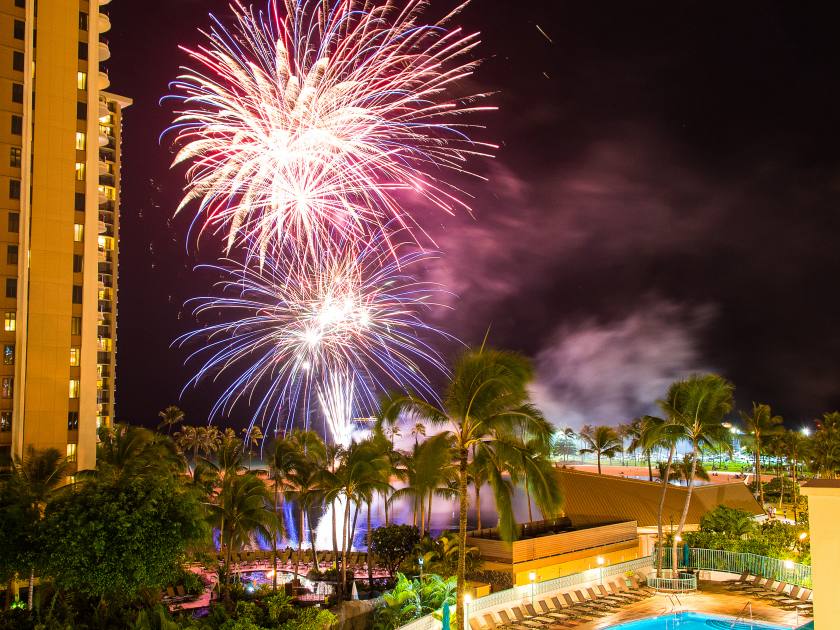
Hawaii hosts a variety of events and festivals during the New Year, blending cultural traditions with modern celebrations. Key events include the Waikiki Starlight Luau, a Polynesian music and dance event at Hilton Hawaiian Village, and the New Year’s Eve Fireworks Show at Waikiki Beach. The Makahiki Festival, four months dedicated to the god Lono, features games, contests, and religious ceremonies. The Aloha Tower Marketplace also hosts a lively New Year’s Eve party with live music, food vendors, and a breathtaking fireworks show. Cultural festivals across the islands also showcase traditional music, dance, and cuisine, providing an immersive experience for those seeking to immerse themselves in Hawaiian culture.
Tips for Visitors
- Book accommodations, flights, and rental cars in advance due to high tourist demand.
- Pack a light jacket for cooler nights, along with swimsuits, sun hats, and sunscreen for beach enjoyment.
- Explore different islands for varied experiences, from vibrant celebrations in Honolulu to the natural beauty of Kauai.
- Attend traditional luaus for Hawaiian food, hula dancing, and music.
- Join environmental activities like cleanups and tree planting to practice ‘malama ka aina`.
- Visit local community centers for cultural classes and workshops related to language and practices.
- Approach cultural experiences with respect, understanding you’re a guest in a culture with deep traditions.
- Adhere to local customs and be mindful of environmental impact.
- Embrace the ‘aloha spirit’ not only towards people but also towards the land and nature, ensuring these traditions thrive for future generations.
How Hawaii’s New Year’s Upholds the Values of the Islands
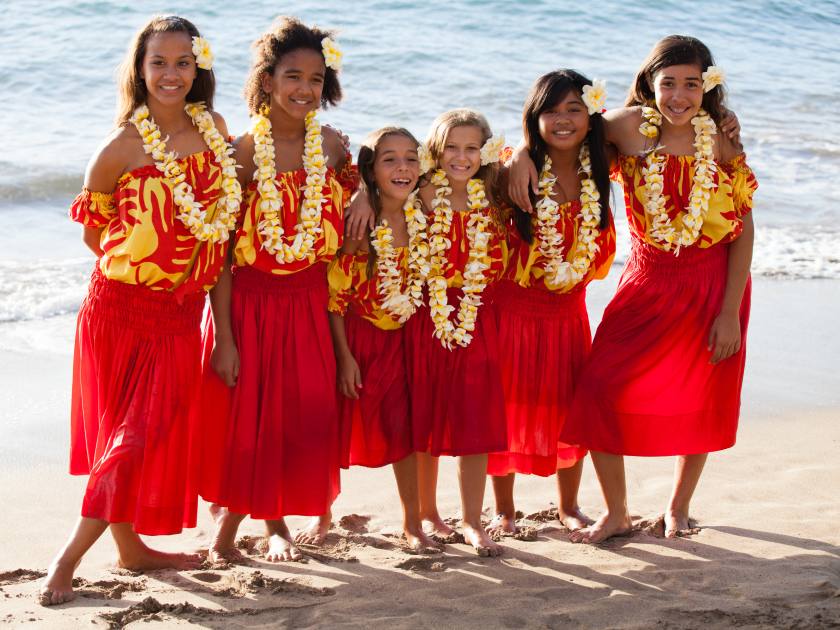
Hawaii’s New Year’s celebrations are more than just a time for fun and feasts; it is a period of embodying and manifesting the “aloha spirit”. The term encompasses the shared values of love, compassion, and mutual respect that are deeply ingrained in the islands’ culture. New Year’s resolutions are made with a heavy emphasis on these principles. The community-centric ethos of the islands is also exemplified during New Year’s, where locals participate collectively in environmental conservation activities and cultural workshops. These nurturing practices not only strengthen communal bonds but also ensure the preservation and transmission of the islands’ rich cultural heritage. Thus, the New Year’s celebrations in Hawaii uphold the islands’ values, harmoniously blending modern festivities with traditional wisdom, and keeping the `aloha spirit` alive and thriving.
Welcome the New Year Hawaiian-Style!
As we say in Hawaii, “Hau’oli Makahiki Hou” – Happy New Year! It’s an opportunity to appreciate the cultural richness, communal spirit, and vibrant traditions that make Hawaii truly special. By embracing the traditions, participating in community activities, and practicing cultural sensitivity, you will not only create lasting memories but also contribute to the preservation and appreciation of the vibrant Hawaiian heritage. In the spirit of aloha, may your New Year be filled with joy, connection, and the unforgettable magic of Hawaii.


